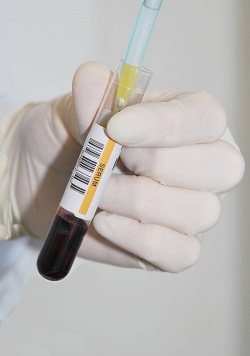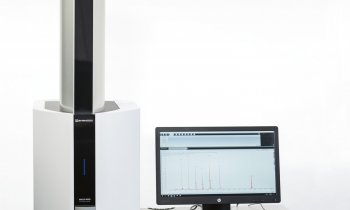Biomarkers - Keys to prevention and early detection
Biomarkers as the key to prevention and early detection were the subject this autumn at the 7th Annual Congress of the German Society for Clinical Chemistry and Laboratory Medicine (DGKL) in Mannheim. For the DGKL president Professor Karl J Lackner MD, Director of the Institute for Clinical Chemistry and Laboratory Medicine at Johannes Gutenberg University, Mainz, the topic is of increasing importance.

‘When it comes to health political decision-making, the subject of prevention is still not given enough consideration,’ he pointed out. ‘Measures for the early detection of diseases have to move closer into the spotlight to avoid the impending cost explosion. We can already see that, in the future, there will be different approaches to prevention, because it can and should be customised for individuals based on their specific risk profile.’
Biomarkers make it possible to identify diseases such as Alzheimer’s, rheumatoid arthritis and certain cancers at a disease stage where the patient shows no symptoms. Based on the assessment of an individual’s risk profile it would therefore be possible to examine people preventively, which, according to Prof. Lackner, obviously would have ethical and socio-political implications. For example, diagnosis alone, without follow-up treatment, would not be very helpful.
Biomarkers are also helpful in the development of personalised treatment, because whether a drug is likely to work can often be a genetic issue. Therefore, the determination or exclusion, respectively, of certain genetic changes can make a decisive contribution towards therapy management -- not only minimising costs and side effects but also raising treatment quality. ‘In the case of an increased familial occurrence of certain types of tumour, for instance, people with no symptoms but still at higher risks can be identified using biomarkers. This constitutes a meaningful contribution towards prevention,’ said Dr Clemens Kaiser, press officer for the Professional Association of Natural Scientists in Laboratory Diagnostics and a staff member of the Institute for Laboratory Medicine at the Klinik am Eichert in Göppingen, adding: ‘On the other hand, biomarkers can be used preventively to reduce undesired side effects of treatment, or to optimise therapy. For example, if medication against circulatory disorders is prescribed to prevent heart attacks or strokes it is important to know whether the patient will actually respond to treatment with a certain drug.’
Much fundamental research is still needed before other conditions can be diagnosed and treated at an early stage. Moreover, the results of that research should be linked to clinical diagnoses of patients to generate clinical benefit.
At the congress another key focus was on the cardiac biomarker troponin, now detectable in the very smallest amounts, thus also facilitating even more precise diagnosis for mild or unspecific symptoms, as was demonstrated in lectures by Professor Hugo A Katus MD, of the Department of Internal Medicine II at University Hospital Heidelberg, and others.
Troponin T and acute myocardial infarction diagnosis
Cardiac troponin T is a heart-specific molecule of the contractile mechanism, which can be detected in blood at increased levels for some time after irreversible cell damage and which indicates severe heart muscle damage. Many prospective and randomised studies have confirmed the diagnostic and prognostic superiority of cardiac troponin measuring rather than measuring cardiac enzymes such as CK-MB. Thus measuring cardiac troponin is now considered the gold standard to diagnose heart attacks.
So far, however, the troponin assays used in clinical routine have been limited by insufficient analytic sensitivity, so minimal increases of troponin could not be detected safely. Hence working groups at various specialist associations have called for improvements to diagnostic tests so that minimal increases compared to the normal range can be safely detected with high precision. Additionally, preliminary studies on large patient cohorts have shown that each – i.e. even a minimal – troponin release is associated with increased cardiac risk.
To meet these analytic requirements, Roche developed the very highly sensitive Elecsys Troponin T high sensitive (HS) assay, which can measure even minimal increases of troponin in blood. This improved test has been in use in clinical practice since 2009.
First clinical results:
• Through more sensitive measurement of troponin T it has been possible to identify 20-30% more patients with heart attacks among those with acute coronary syndrome than was previously possible.
• Using sensitive troponin T assays, heart attacks can be detected much earlier following the onset of pain. This has made earlier heart attack markers, e.g. myoglobin or FABP (fatty acid-binding protein) redundant.
• In acute coronary syndrome patients even a minimal increase, which can only be measured with the highly sensitive assay, has an unfavourable prognostic significance. Also, identification particularly of patients with a lower risk is much better than with the old test (negative predictive value).
• Minimal troponin T increases also can be found in the case of ischaemic heart muscle damage, e.g. pulmonary embolism, myocarditis, tako-tsubo cardiomyopathy and heart insufficiency. In these collectives the highly sensitive troponin T also indicates increased risk.
• In patients with stable angina pectoris, and even in supposedly healthy populations, it has been possible to detect increased troponin T levels. Even in these collectives increased troponin was associated with significantly increased risk of mortality.
In summary: It can be said that the more sensitive troponin T assay has opened up a new dimension in laboratory/chemical heart attack diagnosis and risk stratification of patients with non-ischaemic heart disease.
27.10.2010











